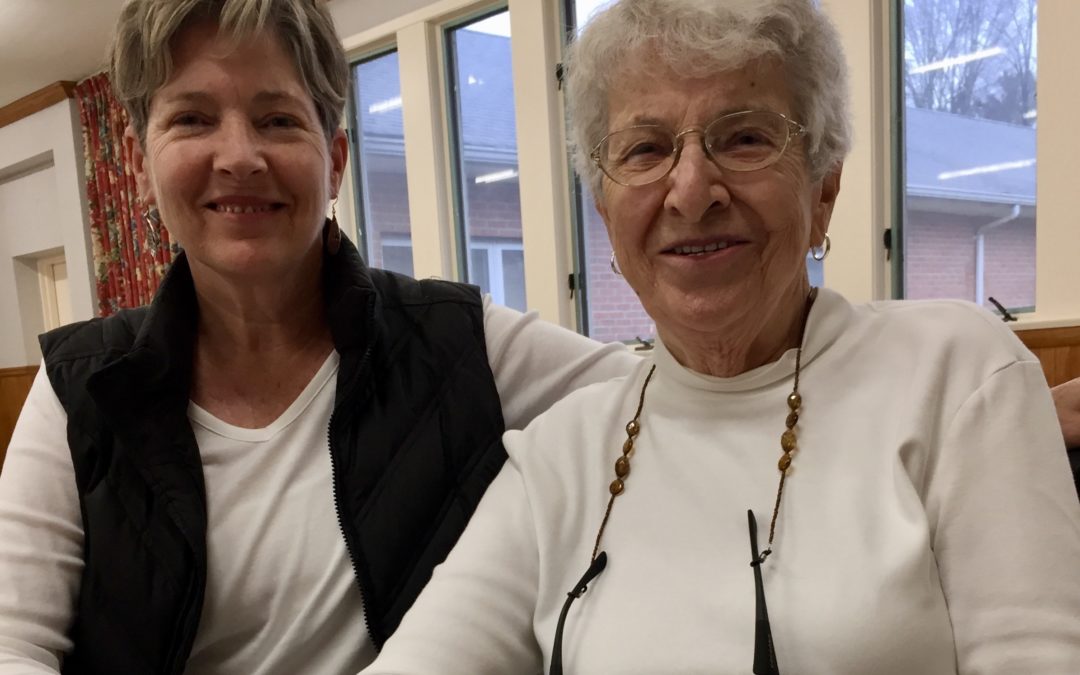Sheila gave up reading, cooking, and independent outings when age-related macular degeneration severely affected her vision.
With no sight in her left eye and only peripheral vision in her right, her world shrunk. “It was really hard to accept at the beginning. I suddenly needed help with everything,” the 88-year-old widow said. Sheila’s outlook has changed since completing six sessions of low vision occupational therapy at Vision Loss Alliance of New Jersey. “It’s certainly given me more confidence,” Sheila said after a recent session with Vision Loss Alliance Program Director Elsa Zavoda, an occupational therapist certified in low vision by the American Occupational Therapy Association.
Sheila has learned about the importance of room lighting and cutting down glare with special glasses. Using a headlamp and handheld magnifier recommended by Zavoda, “I’m able to read more than I thought,” she said. Zavoda suggested replacing her shade lamps with torchiere lamps strategically placed in her living room and bedroom. “That has really brightened her apartment,” Sheila’s daughter, Fran, said. She’s also cooking again, having learned techniques that keep her safe in the kitchen. The night before, she’d cooked a chicken cutlet and baked potato. “She hadn’t cooked for herself in a long time, and now she’s doing it, and doing it well,” Fran said.
Vision Loss Alliance started offering low vision occupational therapy over the summer to train people to optimize their remaining vision. “Vision loss doesn’t mean life has to stop,” Zavoda said. “People dealing with it can adapt, learning to do things differently.” Zavoda assesses participants’ current vision and life circumstances to help prioritize their goals, and tailors the hour-long sessions to those goals. Safety, cooking, grooming, medication management, paying bills, reading, appropriate lighting, watching television, and using the computer, are among the activities covered. Many health insurance plans cover the cost of low vision occupational therapy.
Occupational therapy is opening her world. Sheila said she may try the dining room at the Basking Ridge senior community where she lives and start taking the community bus to the grocery store and use the magnifier to read food labels. “Before my mom came here, she didn’t have confidence, so she wasn’t trying things,” her daughter said. “Now she realizes there’s a lot she can do.” “This has been a great experience,” Sheila said. “I’ve gotten so much out of it!”

